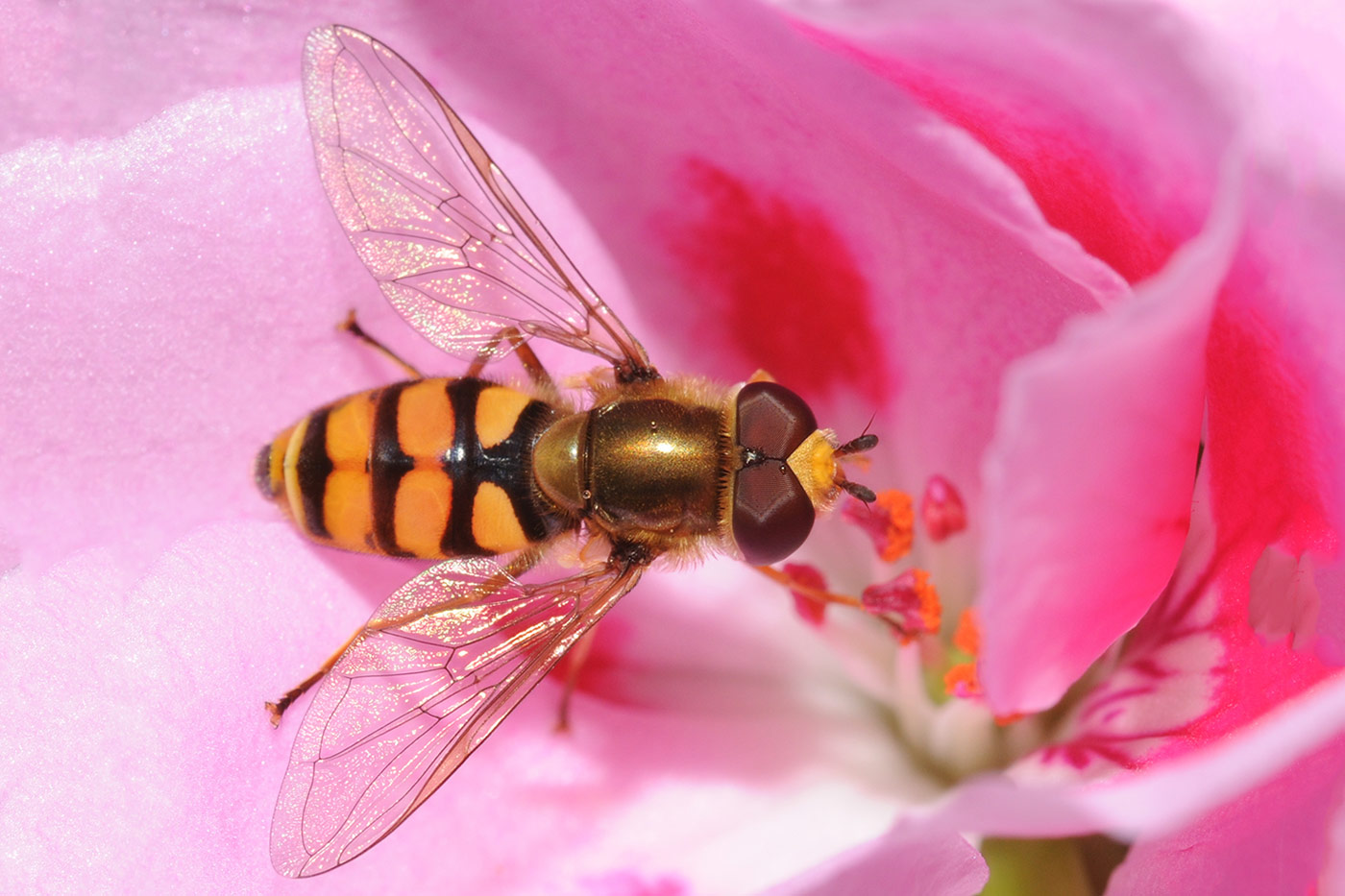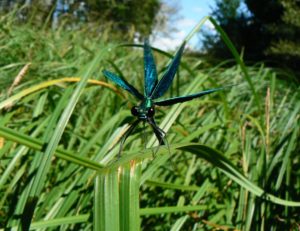
Hoverflies are under the microscope to better understand their behaviour and role in agriculture, including for pollination and the biological control of insect pests.

Their remarkable motion vision and ability to hover near stationary for prolonged periods of time is fascinating neuroscientists and researchers at Flinders University and Uppsala University in Sweden, under a novel research collaboration.
They will be the subject of the University’s next Investigators Lecture at Flinders at Victoria Square (from 5.30pm on Wednesday 19 July).
Flinders Associate Professor Karin Nordström, who established the Motion Vision group at Uppsala, now continues her research at Flinders University where she lectures in Medicine.
She is the SA state representative for the Australasian Neuroscience Society and also is co-chairing the program committee for next year’s International Congress of Neuroethology to be held in Brisbane.
Her research group publishes extensively on hoverflies, predatory flies and other flying insects which provide optimum optical, neural and visualisation powers – in spite of their size.
This laboratory research will be used to help to inform aeronautical, defence and drone technologies, as well as ecology and biodiversity outcomes.
“Since insects are small, with size-constrained eyes and brains, they have evolved to optimise their optical, neural and behavioural target visualisation solutions,” Associate Professor Nordström says.
“Indeed, even if evolutionarily distant insects display different pursuit strategies, target neuron physiology is strikingly similar.
“Furthermore, the coarse spatial resolution of the insect compound eye might actually be beneficial when it comes to detection of moving targets.”
Hoverflies are found across the globe, with an estimated 6,000 species described worldwide.
They are very useful in agriculture, with some emerging as model species for the biological control of aphids.
Associate Professor Nordström says hoverflies are “ecologically important alternative pollinators and provide an extremely valuable alternative to the world’s wavering bee populations”.
“The world’s bee and bumblebee populations are declining, though an estimated 80% of European crops are directly dependent on insects for pollination,” says Associate Professor Nordström.
“Preserving and promoting wild pollinators is therefore crucial for sustainable agriculture.
“In addition to maintaining natural habitats and reducing pesticide use, an increased understanding of why and how wild pollinators utilise certain sources will allow us to propose efficient planting and maintenance strategies that maximise crop pollination.”
The Hoverfly Vision group is using hoverflies to understand how the nervous system codes visual information. A range of techniques are used, including electrophysiology of single neurons in the fly brain, quantitative behavior, free flight experiments, and field site measurements.
The research is currently funded by the US Air Force Research Laboratory, The Australian Research Council and Stiftelsen Olle Engkvist Byggmästare.
Flinders Investigators is a free public lecture series bringing the University’s world-leading research to the wider community.
On Wednesday 19 July, Associate Professor Karin Nordström – Senior Lecturer in Anatomy and Histology at Flinders University – will deliver a Flinders Investigators lecture on ‘The visual world of hoverflies, and how to attract wild pollinators across continents’.

